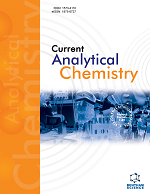
Full text loading...

Air pollution is a pressing global health and environmental issue, particularly in urban areas where both natural and human-induced factors contribute to deteriorating air quality. While extensive data exists for large industrial cities, less is known about pollution dynamics in smaller, mountainous urban centers. Dushanbe, the capital of Tajikistan, represents a unique setting where seasonal weather patterns and limited industrial activity intersect. This study aims to analyze the air quality in Dushanbe, Tajikistan, by examining the presence of various pollutants over a five-year period (2017-2021).
A longitudinal observational study was conducted using automated air sampling systems at a central monitoring site. Chemical composition of aerosol for metals as well as carbon, sulfur dioxide (SO2), Nitrogen monoxide (NO), Nitrogen dioxide (NO2) and carbon monoxide – (CO) in the atmospheric air of the city of Dushanbe in the period from 2017 to 2021 was analyzed. Atmospheric aerosol samples (C µg/m3, C max, C min) for all metals were determined. Constant monitoring of gas content in the surface layer of the atmosphere was carried out on the territory of the Agency for Hydrometeorology of the Republic of Tajikistan. Descriptive statistics were used to analyze seasonal and annual trends in pollutant levels.
Metals such as Titanium (Ti), Vanadium (V), Chromium (Cr), Manganese (Mg), Iron (Fe), Cobalt (Co), Nickel (Ni) and Copper (Cu) were also detected, which we found in plant organs. These results are in favor of the weather pollution caused by titanium and iron. Average monthly levels of CO, SO2, and NO2 in the atmospheric air of the city of Dushanbe in the period from 2017 to 2021 showed that the variation of air pollution varied according to the seasons and months for each year.
Air quality in Dushanbe is influenced more by geographic and seasonal factors rather than heavy industrial activity. Temporary exceedances in CO and NO2 levels reflect localized emissions from traffic and heating. The absence of toxic heavy metals indicates a relatively low long-term health risk from industrial pollution.
This study provides a comprehensive analysis of Dushanbe’s air quality, demonstrating generally good conditions with short-lived pollution events. Targeted seasonal interventions—such as improved traffic and heating emission controls—are recommended to mitigate transient exposure risks.